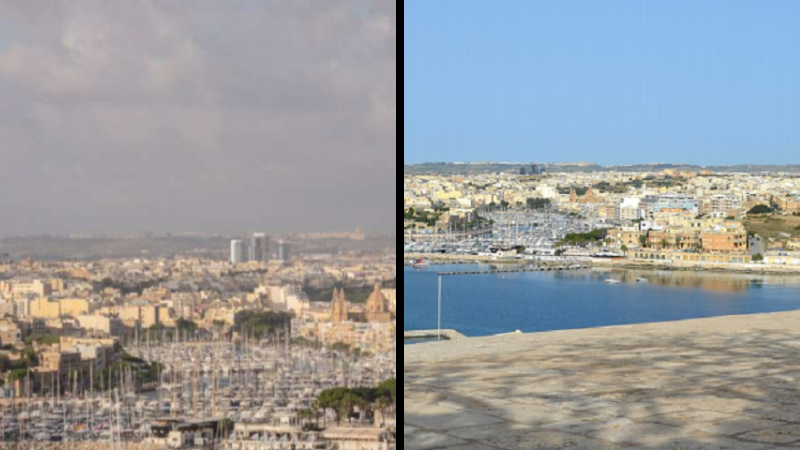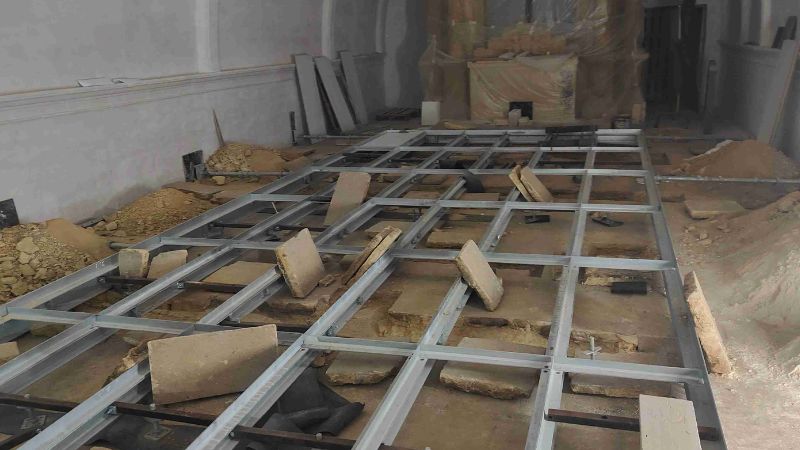New photomontages published in an update to the original Environment Impact Assessment for the Quad Business Towers in Mriehel, vindicate claims by environmentalists that photographs presented when the project was first approved in August 2016 did not show the full impact of the development on the landscape.
This suggests that the Planning Board took its decision on the basis of a document which did not show the full impact the project will have on the skyline.
The most striking difference is between photos showing the view from Hastings Gardens in Valletta and from Mdina. For the first time the EIA also includes a photomontage of a view from the Upper Barrakka Gardens in Valletta.
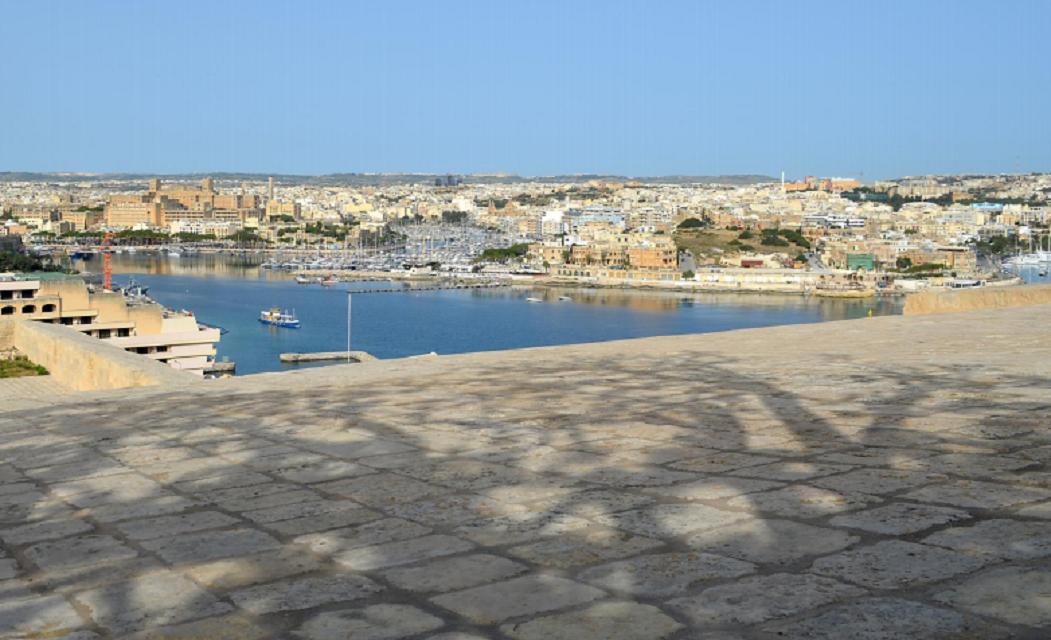
View of development from hastings according to first EIA
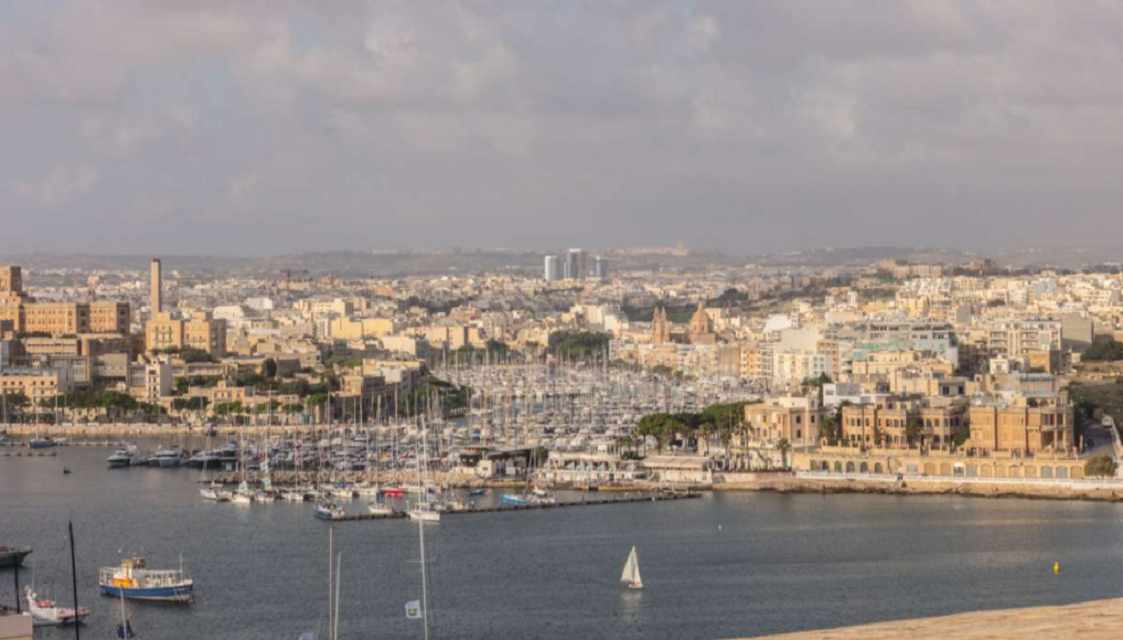
View of towers from Hastings in updated EIA
The original EIA described the impact on Mdina views as “small” and as a “barely noticeable change”.
However, the new EIA acknowledges that the “scheme introduces a noticeable change” and that “the towers are domineering within the viewpoint even if it does not “break the skyline”.
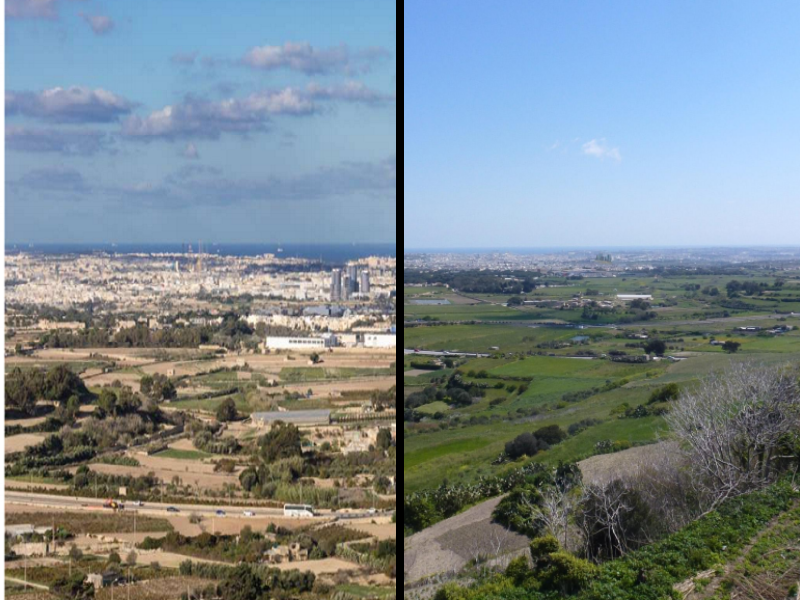
Contrast between view of Quad Business Towers from Mdina between the new EIA update (left) where these are clearly visible and the original EIA where the towers are barely visible (right)
As regards views from Hastings both EIA’s refer to “a moderate change, especially noting proximity to view of Mdina” but clearly the photo included in the new EIA suggests a stronger visual impact.
Views from Mriehel itself (Triq il-Hofor) also show a more pronounced impact on surrounding rural landscape.
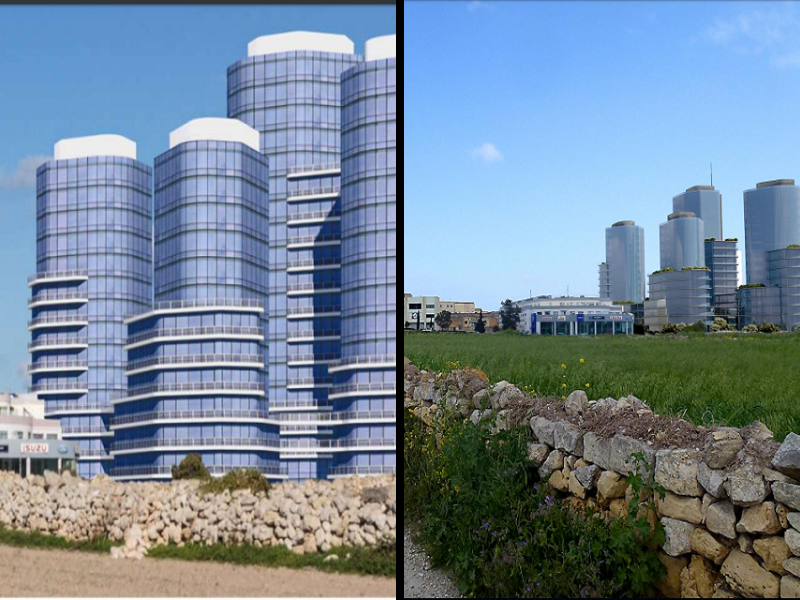
View from Triq il-Hofor as seen in the updated EIA (left) and in the original EIA (right)
The new EIA is being presented in view of a proposed increase of the site from the approved 10,082 square metres to 11,262 square metres and the increase of 313 parking spaces.
The EIA consultants acknowledge that when carrying out the assessment, the 2015 MEPA guidelines were not available at the time of writing the EPS for the Quad Towers even if the project was approved in 2016 after the guidelines came in place.
The new photomontages are in accordance with the 2015 MEPA’s Best Practice Guide Visual Simulations.
The issue was raised during the board meeting in August 2016, when the project was approved, by Daniel Cilia, a photographer speaking on behalf of objectors.
He also presented photos from the same viewpoints that replicated what people would actually see more accurately, showing the visual impact significantly magnified.
Cilia’s argument was supported by Environment and Resources Authority chairman Victor Axiak, who in a written submission said he had personally visited the Mdina viewpoint and found the actual view was different to that seen in the photographs.
Axiak was indisposed and did not attend the meeting which decided for the high-rise towers, but had sent a memo to board member Timmy Gambin which was read during the meeting.
The Environment Impact Assessment on the Mriehel project, which included the photomontages taken with a 25mm lens, was published in October 2015.
The circular recommending the use of a 50mm lens was issued by the Planning Authority on 25 November, 2015 just weeks after the EIA on Mriehel was published.
This means that the circular was not applicable when the EIA was presented but was already in force when the application was brought in front of the PA board for a decision.
An appeal presented by environmental NGOs against the original decision is still pending. Mriehel was included by government in the list of localities where high rise development is allowed in absence of any public consultation.

View of towers from Barrakka gardens as represented in updated EIA

